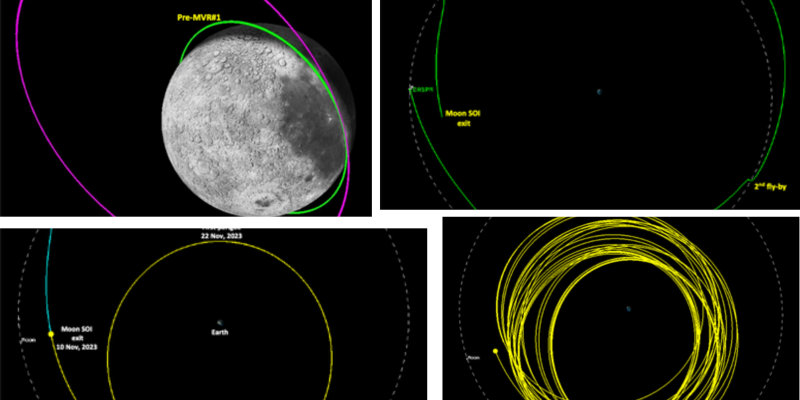ISRO returns Chandrayaan-3 drive module to Earth.

The Indian Space Research Organization (ISRO) has conducted a one-of-a-kind operation by transferring the Propulsion Module (PM) of Chandrayaan-3 from lunar orbit to Earth orbit over an extended period of time after the mission’s initial objectives were met.
ISRO reported that the PM successfully finished its main task of moving the lander module from Geostationary Transfer Orbit (GTO) to the final circular orbit around the moon’s poles and separated as planned.
According to ISRO, the Chandrayaan’3 Propulsion Module accomplished its primary goal and is now being used to collect additional data for future lunar missions as well as to show operational strategies for future sample return missions.
Once they were no longer connected, ISRO ran the Spectropolarimetry of the Habitable Planet Earth (SHAPE) payload inside the PM. The PM’s mission was supposed to last three months, but after more than a month in lunar orbit, optimized orbital moves left over 100 kg of fuel.
ISRO revealed that the Chandrayaan’3 Propulsion Module achieved its primary aim and is now collecting data for future moon missions and outlining sample return mission operational methods.
As expected, ISRO said that the PM successfully moved the lander module from Geostationary Transfer Orbit (GTO) to the final lunar polar circular orbit.
Following separation, ISRO used the PM to operate the Spectropolarimetry of the HAbitable Planet Earth (SHAPE) payload. Originally planned for a three-month operation during the PM’s mission life, optimized orbital maneuvers left almost 100 kg of fuel in lunar orbit after more than a month.
Using an excess fuel for extended missions
Given the excess fuel, ISRO chose to use it to gather additional data for prospective lunar missions and to demonstrate operational techniques for future sample return missions.
ISRO intentionally re-orbited the PM to a suitable earth orbit to enable sustained earth observation with the SHAPE payload. The concept prioritized avoiding collisions with the Moon’s surface and Earth’s Geosynchronous Equatorial Orbit (GEO) belt at 36,000 km and lower orbits.
The ideal return trajectory for the PM was devised for October 2023, with precision maneuvers changing its altitude and orbit period, eventually transferring it away from the Moon’s zone of influence on November 10.
The PM is currently orbiting Earth, reaching its first perigee on November 22 at an altitude of 1.54 lakh km, with a 13-day period and a 27-degree inclination. Based on orbit forecasts, ISRO ensures that no threat to operational Earth-orbiting satellites exists.
Ongoing operations
ISRO continues to operate the SHAPE payload while the Earth is visible, including performing a unique operation during a solar eclipse on October 28, 2023.
ISRO’s flight dynamics team created analysis tools and software modules for trajectory planning and execution, gravity-assisted fly-bys, and ensuring controlled end of the PM’s life without debris production.
ISRO has outlined the primary outcomes of the PM’s return manoeuvres for future missions: planning and executing the trajectory back from the Moon to Earth, developing and validating software for this manoeuvre, performing a gravity-assisted fly-by around a planet or celestial body, and ensuring controlled termination of the PM to prevent debris on the Moon’s surface.
Chandrayaan-3 was a success
The Chandrayaan-3 mission sought to demonstrate a soft landing near the lunar south pole and conduct experiments using instruments on the ‘Vikram’ lander and ‘Pragyan’ rover.
Launched on July 14, 2023, the spacecraft made a historic Vikram lander touchdown on August 23, installing the Pragyan rover for uninterrupted scientific operations for one lunar day.
These maneuvers and activities showcase India’s progress in space research and lay the framework for future lunar missions.










